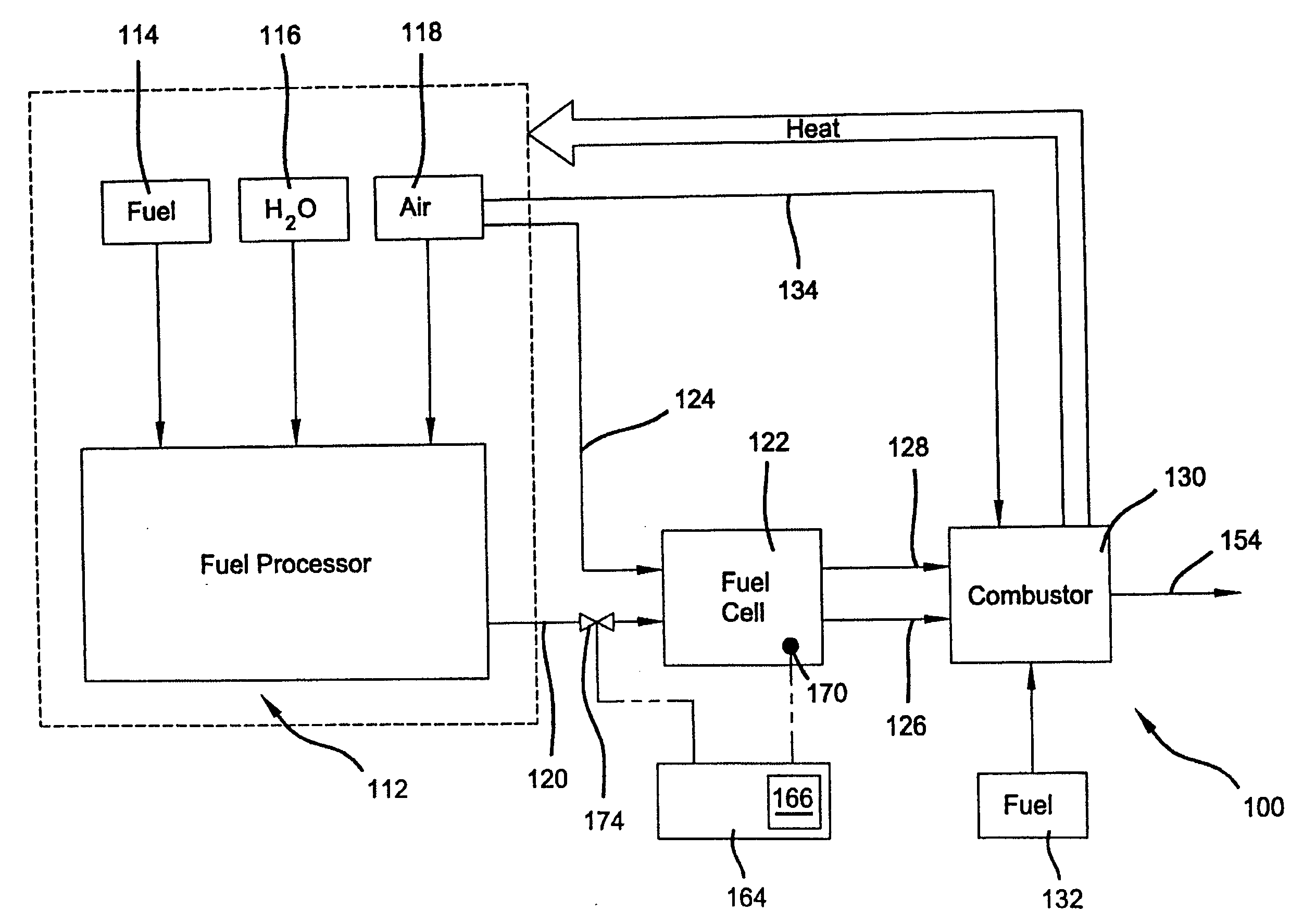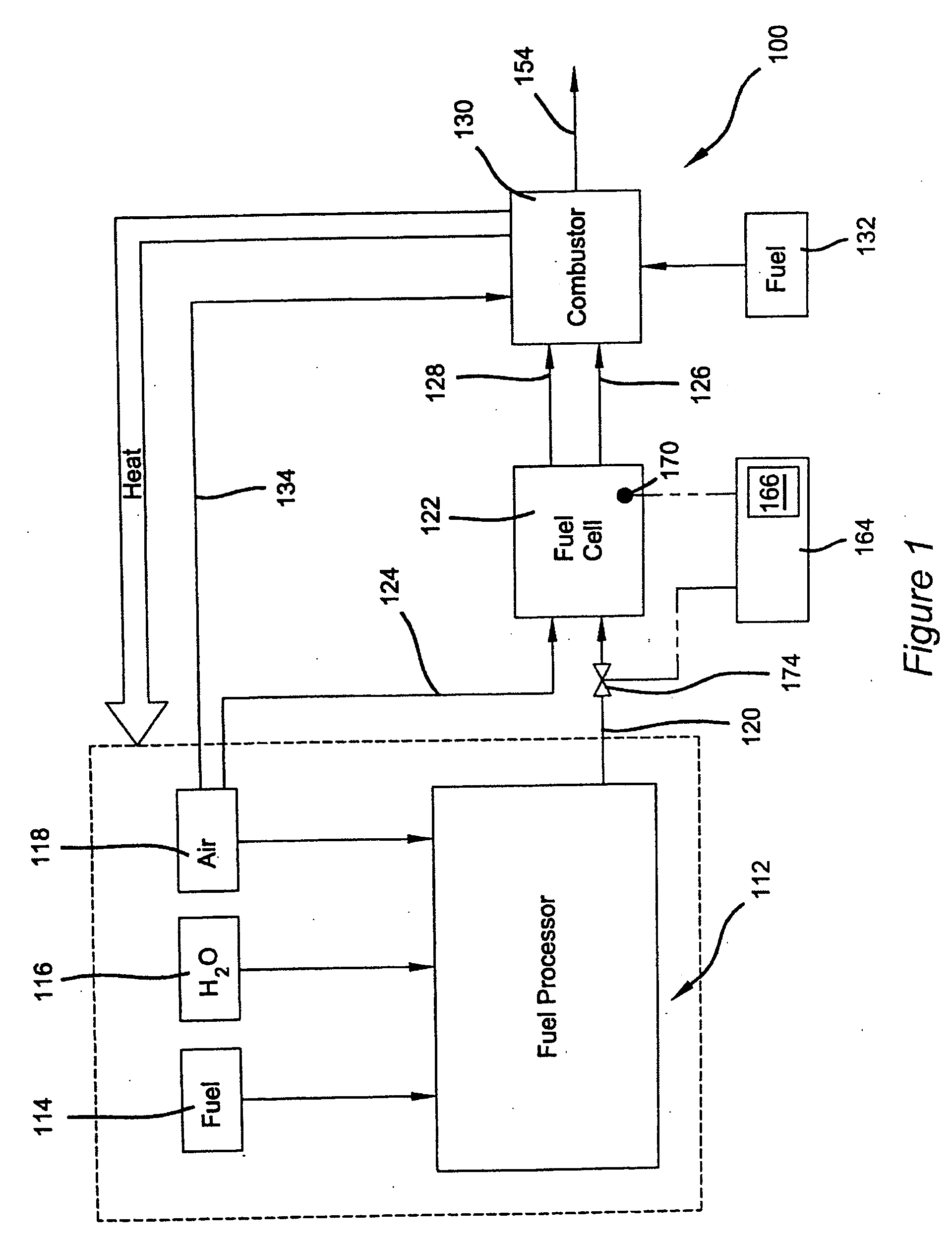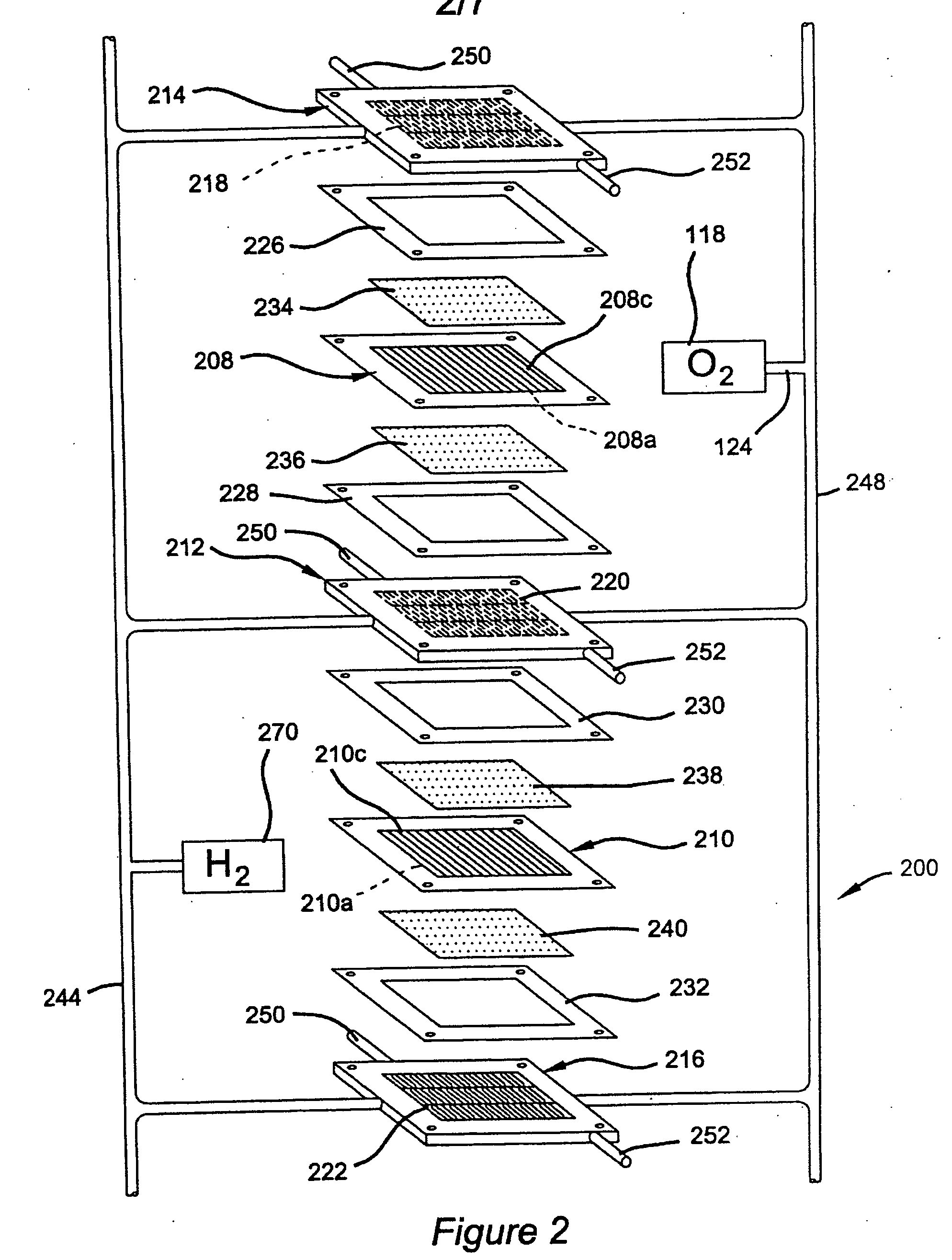Electrical current measurement in a fuel cell
a fuel cell and electric current technology, applied in the field of fuel cell power systems, can solve the problems of significant drift, affecting the electrical current sensor, and not working, and achieve the effects of low cost, low cost, and cost saving
- Summary
- Abstract
- Description
- Claims
- Application Information
AI Technical Summary
Benefits of technology
Problems solved by technology
Method used
Image
Examples
Embodiment Construction
[0027] The following description of the preferred embodiment is merely exemplary in nature and is in no way intended to limit the invention, its application, or uses.
[0028] Real-time process control is generally implemented to control the fuel cell power system described herein. In this regard, real-time computer processing is broadly defined as a method of processing in which an event causes a given reaction within an actual time limit and wherein actions are specifically controlled within the context of and by external conditions and actual times. As an associated clarification in the realm of process control, real-time controlled processing relates to the performance of associated process control logical, decision, and quantitative operations intrinsic to a process control decision algorithm functioning as part of a controlled apparatus implementing a process (such as the fuel cell benefiting from the present invention) wherein the process control decision algorithm is periodica...
PUM
| Property | Measurement | Unit |
|---|---|---|
| power | aaaaa | aaaaa |
| electrical current | aaaaa | aaaaa |
| threshold range | aaaaa | aaaaa |
Abstract
Description
Claims
Application Information
 Login to View More
Login to View More - R&D
- Intellectual Property
- Life Sciences
- Materials
- Tech Scout
- Unparalleled Data Quality
- Higher Quality Content
- 60% Fewer Hallucinations
Browse by: Latest US Patents, China's latest patents, Technical Efficacy Thesaurus, Application Domain, Technology Topic, Popular Technical Reports.
© 2025 PatSnap. All rights reserved.Legal|Privacy policy|Modern Slavery Act Transparency Statement|Sitemap|About US| Contact US: help@patsnap.com



